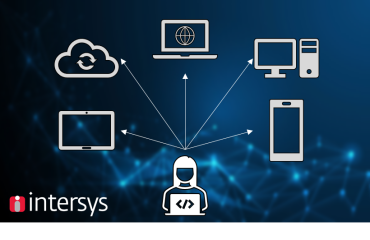
When negotiating a Managed Print Services (MPS) Service Level Agreement (SLA), your main goal is crystal clear: keep the machines running and keep them running well. But a strong SLA isn’t just about uptime percentages; it’s about getting both the customer’s and the provider’s responsibilities down on paper—clearly and without confusion. Too often, provider duties are well defined, while customer responsibilities are vaguely hinted at, leading to frustration and disputes when something inevitably goes wrong. Let’s avoid that.
This article lays the groundwork for building an SLA that’s airtight and aligned with your business needs. We’ll dig into key elements that protect your operations, ensure uninterrupted service, and set clear expectations—especially when it comes to who owns the equipment.
Key Factors to Nail Down in Your MPS SLA
-
Precisely Defined Service Levels That Match Your Business Requirements
-
Understanding and Leveraging Supporting Software Tools
-
Crystal Clear Responsibilities for Both the Provider and Customer
-
How Ownership Structure Affects the SLA
In Part I here we will cover the first two items which lay the ground rules, i.e. help you focus on the definitions.
1. Clearly Defined Uptime Requirements
To achieve uninterrupted service, you need more than just a broad uptime target. Understanding different “states of uptime” and how they relate to each printer’s role in your business is key. Your SLA should be customized to reflect this.
Breaking Down the States of Uptime:
-
Fully Operational: The printer is firing on all cylinders, with every feature available and output quality meeting your standards.
-
Partially Operational (Reduced Features): Some features (like scanning or duplex printing) might be temporarily unavailable. The SLA should specify how long this can last before it escalates.
-
Partially Operational (Low Print Quality): The device is running, but the output is below par (e.g., streaks, color issues). If quality is critical, especially for client-facing materials, this should trigger immediate resolution.
-
Non-Operational but Replacement Provided: The printer is down, but a replacement is quickly deployed to maintain continuity. The SLA should lock in response times and ensure the backup fully meets your needs.
-
Non-Operational with No Replacement: The nightmare scenario. The SLA must be clear on how long this can persist before penalties or termination rights kick in.
Criticality of the Printer’s Role in Your Business:
Not all printers are created equal. Some are critical to your core operations, while others are more secondary. The SLA should reflect this with response times that match the device’s importance.
-
Business-Critical Printers: Devices that, if down, bring your core operations to a halt (think finance, logistics, production). For these printers, the SLA should guarantee rapid response times (e.g., within 2 hours) and prioritize fast replacements.
-
Marketing-Related Printers: These are printers that produce customer facing, high-quality materials where any drop in output quality is unacceptable. However these may not be exactly show-stopping in essence. The SLA should enforce high standards and quick issue resolution.
-
Non-Business-Critical Printers: Devices used for internal, non-urgent tasks. While downtime is inconvenient, it’s not critical. The SLA can allow for more relaxed response times for these printers, as long as productivity isn’t affected.
Combining the two term clusters above in a matrix, quickly gives you the red zone areas vs the orange or green for which your SLA must cater. Remember that you may want it all but there is always a price involved. So right sizing your red areas is key.
2. The Role of Print Management Software vs. Data Collection Agents
It’s important to distinguish between print management software (typically customer-controlled) and data collection agents (DCAs), which are crucial tools for the provider in delivering reliable service. Understanding who handles what avoids misunderstandings and ensures smooth service delivery.
2.1 Print Management Software (Customer-Controlled)
Print management software is usually installed and managed by you to handle tasks like user authentication, cost tracking, and print job management. It enhances efficiency, but it doesn’t directly impact the provider’s ability to meet SLA commitments unless there’s specific integration required. Here’s what should be clear in the SLA:
Customer Deliverables:
-
Operation and Usage: You’re responsible for configuring and running the software, including setting print rules and managing access.
-
Maintenance and Upgrades: Keeping the software updated and compatible with your IT environment is on you unless the provider offers integrated support.
Provider Commitments:
-
Interoperability and Compatibility Assurance: If the provider supplies or recommends the software, they must ensure it’s fully compatible with the devices they manage. The SLA should specify that any updates or changes won’t disrupt the software’s functionality. If the software pre-exists, the provider should ensure their equipment is compatible.
-
Basic Support (If Applicable): If the software is part of the MPS package, the provider is responsible for basic operation, but how it’s configured and used remains in your hands.
By keeping the SLA’s focus on these key areas, you avoid unnecessary complexity and ensure that responsibilities better suited for your IT team don’t end up in the provider’s scope.
2.2 Data Collection Agents (Provider-Controlled)
DCAs are powerful tools managed by the provider to monitor performance, track usage, and detect issues proactively. They play a key role in maintaining uptime and should be central to your SLA.
How DCAs Enhance Service Delivery:
-
Proactive Monitoring and Alerts: DCAs monitor devices in real time, automatically triggering alerts for issues like low toner, paper jams, or hardware errors. The SLA should clearly define response times for these alerts, typically faster than manual reports.
-
Accurate Uptime Reporting: DCA data is crucial for measuring uptime and downtime accurately, ensuring reliable SLA performance metrics.
-
Service Optimization: The SLA should outline how the provider uses DCA data to improve performance—whether by scheduling proactive maintenance, balancing print loads, or managing consumables to avoid disruptions.
Provider Commitments:
-
Proactive Monitoring and Alerts: The provider uses DCA data to monitor device health and take swift action before issues impact operations.
-
Accurate Uptime Reporting: The SLA should establish DCA data as the primary source for tracking uptime, ensuring transparent and consistent performance assessments.
-
Service Optimization: The provider should leverage DCA insights to proactively manage maintenance, optimize load distribution, and automate consumable replenishment, minimizing downtime.
Customer Deliverables:
-
Network Access: You must ensure reliable network access for DCAs, enabling continuous data transmission and real-time monitoring.
-
Environment Setup: You should maintain an environment that allows easy access to devices, minimizing disruption during service visits and enabling prompt issue resolution.
Unlike print management software, which you control, DCAs are fully managed by the provider and are essential for meeting SLA obligations. By clearly defining both provider and Customer Deliverables, you set the stage for optimized performance, proactive service, and consistent uptime.
This is the foundation you need to get your MPS SLA right. Now, we can get into the specifics of making it work for your business.
TBC.

